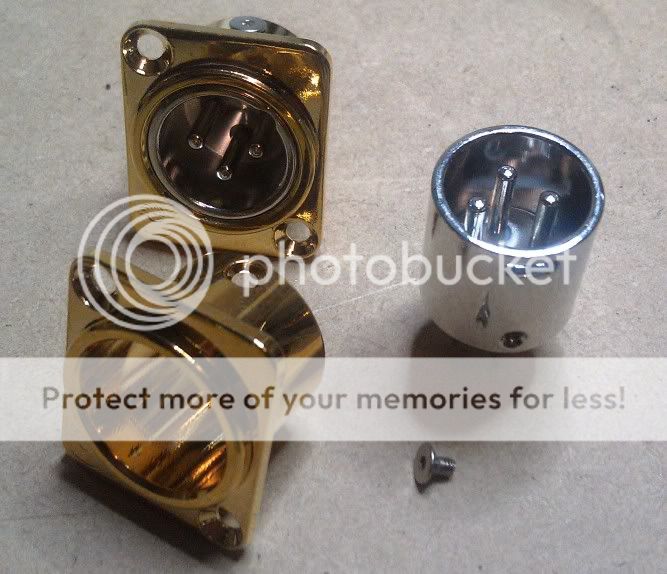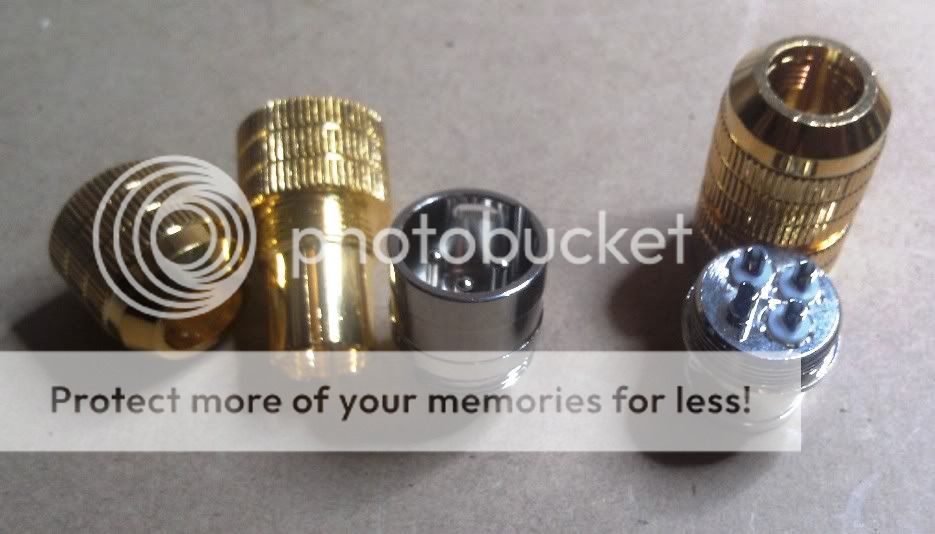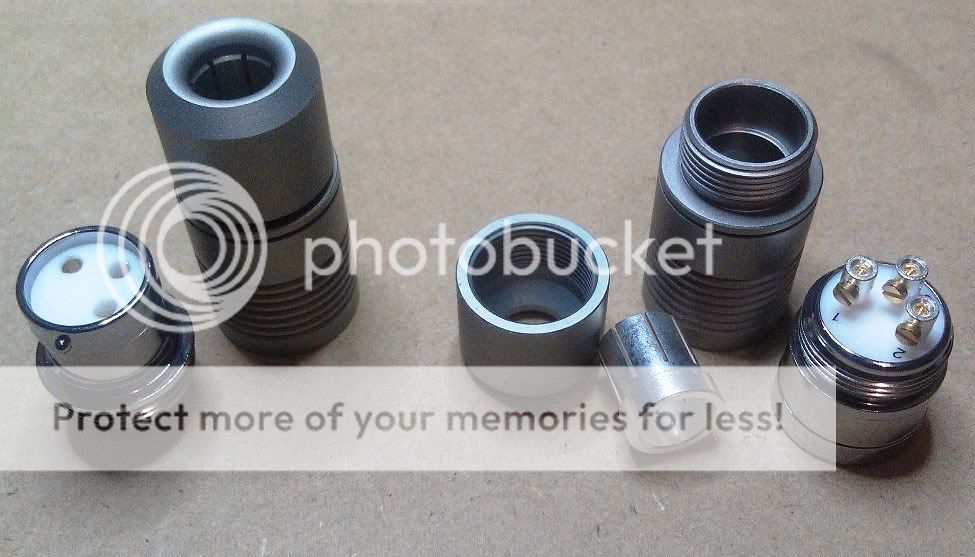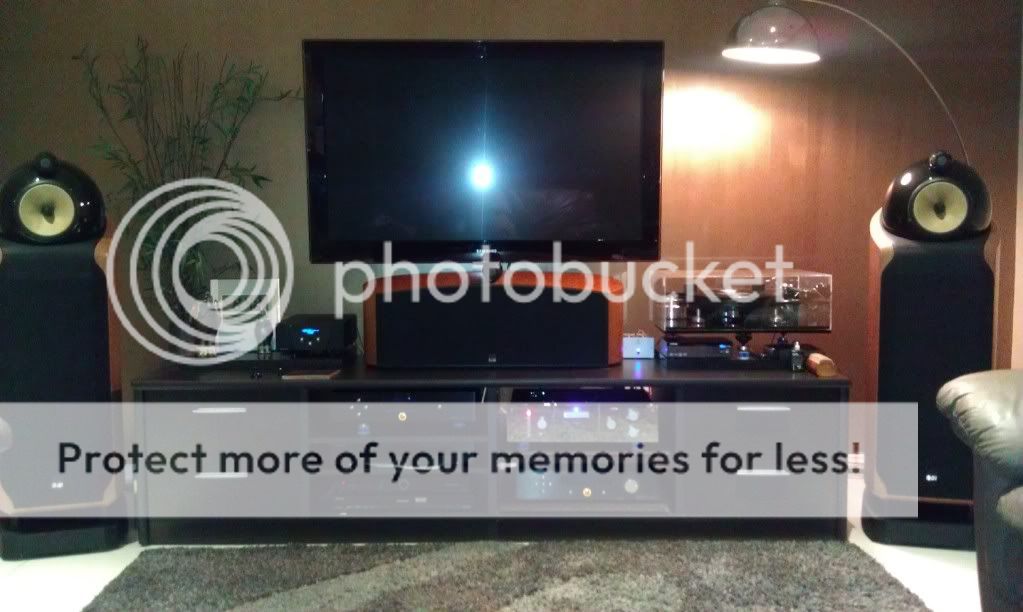4.7uF 160V 2% Hi-End Polystyrene capacitor K71-4 Oty:2 | eBay
I don't think the "best" caps will fit there ;-)
I have checked and Sould be able to get it in.
They did not have 4.7uF so I had to go one up to 5.6uF Silver Gold. Much wider Cap.
4.7 would be easy but 5.6 were a bit trickier. Anyway it went in and WOW.
U-N-B-E-L-I-V-E-V-A-B-L-E WOW.
All i can say it there are more instruments. No that’s wrong. You can hear more of them as individual instruments not lost in the clutter. The timbre in the voices, horns drums are fantastic.
This was not a mediocre system by any length when these mods were started but now fantastic. I have heard some expensive systems but never anything as good as what I’m getting now. If Emotiva wanted to they could really improve these amps with a few good components and have world beaters on their hands.
I will post some pictures tomorrow.
4.7 would be easy but 5.6 were a bit trickier. Anyway it went in and WOW.
U-N-B-E-L-I-V-E-V-A-B-L-E WOW.
All i can say it there are more instruments. No that’s wrong. You can hear more of them as individual instruments not lost in the clutter. The timbre in the voices, horns drums are fantastic.
This was not a mediocre system by any length when these mods were started but now fantastic. I have heard some expensive systems but never anything as good as what I’m getting now. If Emotiva wanted to they could really improve these amps with a few good components and have world beaters on their hands.
I will post some pictures tomorrow.
They did not have 4.7uF so I had to go one up to 5.6uF Silver Gold. Much wider Cap.
4.7 would be easy but 5.6 were a bit trickier. Anyway it went in and WOW.
U-N-B-E-L-I-V-E-V-A-B-L-E WOW.
All i can say it there are more instruments. No that’s wrong. You can hear more of them as individual instruments not lost in the clutter. The timbre in the voices, horns drums are fantastic.
This was not a mediocre system by any length when these mods were started but now fantastic. I have heard some expensive systems but never anything as good as what I’m getting now. If Emotiva wanted to they could really improve these amps with a few good components and have world beaters on their hands.
I will post some pictures tomorrow.
Great, I have read lot's of positive things about Mundorfs. I have been thinking that if these DC blocking caps could be bypassed altogether (along some other cleaning of the input of unnecessary components) if the XLR input was only used. I posted a thread regarding this matter.
Last edited:
If Emotiva wanted to they could really improve these amps with a few good components and have world beaters on their hands.
I think they already have a world beater. There are just so many people that refuse to believe that the amps really are as good as people say. It does not matter how many glowing reviews. Some people just can't get it through their head. Their loss I say.
Great, I have read lot's of positive things about Mundorfs. I have been thinking that if these DC blocking caps could be bypassed altogether (along some other cleaning of the input of unnecessary components) if the XLR input was only used. I posted a thread regarding this matter.
I think my presumption was right. I just bypassed the caps with a copper wire, and with the RCA input chosen the DC offset is ~550mV and XLR input chosen it's only 14mV. Without shorting the caps the DC offsett is ~2mV.
I think the DC leaks from the rca line through the input selector, as I measured 100k resistance over it's legs, it does not insulate good.
AvMania, you have removed the input selector, would you care to try to compoare DC offset with the curent capacitors and after you bupass them with copper wire? If you see no rise in DC offset, and the front leds do not blink (I have constant 2-3 leds on with the 14mV DC offset), then I will propably remove the input selector completely and make the amp fully DC coupled.
AvMania, you have removed the input selector, would you care to try to compoare DC offset with the curent capacitors and after you bupass them with copper wire?
No need to test this anymore
No need to test this anymore.
I spoke to an expert on this and since my preamp has a set of DC blocking caps on the output stage if they were necessary at all for these set of caps. He says they are there as the designer does not know what is upstream of the amp and it’s precautionary. I'm now wondering if I should have saved $600 and just put in some wires instead.
Will the protection cut in if there is any issue in the circuit as a result of removing these Caps?
Please let me know what the end result to the sound was as that is the most important?
I think they already have a world beater. There are just so many people that refuse to believe that the amps really are as good as people say. It does not matter how many glowing reviews. Some people just can't get it through their head. Their loss I say.
I could not agree with you more. Too my ears this amp matched the Krell I was looking to get at a fraction of the price. The stock amp is superb and as we have seen the fundamental design and implementation is very very good.
Last edited:
I spoke to an expert on this and since my preamp has a set of DC blocking caps on the output stage if they were necessary at all for these set of caps. He says they are there as the designer does not know what is upstream of the amp and it’s precautionary. I'm now wondering if I should have saved $600 and just put in some wires instead.
Will the protection cut in if there is any issue in the circuit as a result of removing these Caps?
Please let me know what the end result to the sound was as that is the most important?
Hi, don't worry, they cannot be bypassed. It would need some re-engineering on the circuit also, I'm not going there. The DC-offset skyrockets if there's a low output impedance source connected to the input. Here's some info that I received to my question: http://www.diyaudio.com/forums/soli...puts-low-pass-rfi-filter-other-questions.html
Btw. I just added 60,000µF into the other XPA-1. I noticed already that the cap inrush rised from 300w to 415w on my power meter. The values are not accurate, but the y give you an idea how much the cap inrush increased. I will post some pictures soon, after I have taken shots of the oscilloscope's screen
Hi Legis,
Ok. No replacing of the caps with wires. I replaced hte 4.7 with a 5.9 on the advise of the supplier as he did not have 4.7's. he said due to it being a DC blocker this would be ok and better than a 3.9. All uF's
in terms of sound would it change because of the 5.9uF instead of the 4.7uF's?
thanks
Ok. No replacing of the caps with wires. I replaced hte 4.7 with a 5.9 on the advise of the supplier as he did not have 4.7's. he said due to it being a DC blocker this would be ok and better than a 3.9. All uF's
in terms of sound would it change because of the 5.9uF instead of the 4.7uF's?
thanks
Hi Legis,
Ok. No replacing of the caps with wires. I replaced hte 4.7 with a 5.9 on the advise of the supplier as he did not have 4.7's. he said due to it being a DC blocker this would be ok and better than a 3.9. All uF's
in terms of sound would it change because of the 5.9uF instead of the 4.7uF's?
thanks
The 5,9µF lowers the cut off frequency, bass rolls of later. If I rememeber correctly, with the 4,7µF original resistors the response was 3dBs down at 5Hz. You might have -2,5dB at 5hz with that bigger cap, if the response was originally rolled off due those caps.
I made the pictures of the extra cap bank and it's effect to ripple. The averaged ripple p-p dropped from 106mV --> 75mV. I think you AvMania will have very low ripple with the original bias and those badass Mundorfs with ultra low ESR.
Wonder solder signature runned out after I soldered the caps to boards and I had to use some rohs compatible to finish the job (it looks like shite compared to ultra smooth finish of the wonder solder). I super glued 3mm thick rubber mat on the solder side for insulation and attached the caps with hot glue against the bottom. Not the most robust attaching method but i think it will do if i don't throw the amp around
By the way, the caps I used are the same as the originals as you can see
Some pictures:
An externally hosted image should be here but it was not working when we last tested it.
An externally hosted image should be here but it was not working when we last tested it.
An externally hosted image should be here but it was not working when we last tested it.
Ripple without the caps:
An externally hosted image should be here but it was not working when we last tested it.
Ripple with the caps:
An externally hosted image should be here but it was not working when we last tested it.
Last edited:
Hello Legis,
What is the total capacitance now .....?
Hi wayne, the total capacitance is now 180,000µF per monoblock. I'm gonna put the extra capacitance inside the second XPA-1 soon. I think I will find some other solution for the insulation than the rubber mat. It's electrical properties (besides insulation) are quite horrible. Best would be some teflon or polypropylene sheet, but where could I find one of those... Ultimately best would be just air. Or then I just glue some cotton on it, yep, that might do. I will also add small bypass cap for every 10000µF cap on that board.
edit. I was also thinking that I could add anothet 4,7µF signal/DC blocking capacitor underneath the board. It would halve the impedance and inductance and move the xo point one octave lower.
Last edited:
After couple of days of extensive listening and some level matched comparison between XPA-1s and my other monos, I would say that the bass's tighness was enhanced somewhat with the extra filter capacitance. It's now on my par with my other monos that are one of the most craziest control freak amps I have ever heard. This was tested with one of my passive crossed commecial "test speakers". Also with my fully active "main" set, where XPA-1s drive line arrays consisting 9pcs of 6,5inc Peerless midbasses, the midbass's attack and I would say coherency/integration with the bottom octave, is better than before. This effect is quite interesting, I have never thought that amp's "dynamic nature" could affect feeling of bass integration (I have crossed midbasses to subs at 100Hz/LR2).
By the way, I thought I heard some minor harsness at mid and high frequencies for the first 30-60min of listening with the extra caps. I quess almost every change to the amp must have some sort of burn in perioid before critical listening so the grain structure of the new component's conductors and newly soldered joints can adapt somewhat to move electrons more efficiently. Just a wild quess. Maybe even detaching an IC or speaker cable and connecting it again needs some kind of burn in time so the contacts can form a molecular bond between the metals (or because the contacts can oxidize ).
).
I'm thinking to buy a pair of those Cardas XLR socket that AvMania has. AvMania, one final comment on the build quality and general "feeling" of the the connectors, are thay worth the extra money compared to let's say Neutriks or Switchcraft's sockets? You said you used 1mm silver conductors, do you think that the holes on the PCB could house 16AWG/1,3mm conductors as well?
Regards,
Legis
By the way, I thought I heard some minor harsness at mid and high frequencies for the first 30-60min of listening with the extra caps. I quess almost every change to the amp must have some sort of burn in perioid before critical listening so the grain structure of the new component's conductors and newly soldered joints can adapt somewhat to move electrons more efficiently. Just a wild quess. Maybe even detaching an IC or speaker cable and connecting it again needs some kind of burn in time so the contacts can form a molecular bond between the metals (or because the contacts can oxidize
I'm thinking to buy a pair of those Cardas XLR socket that AvMania has. AvMania, one final comment on the build quality and general "feeling" of the the connectors, are thay worth the extra money compared to let's say Neutriks or Switchcraft's sockets? You said you used 1mm silver conductors, do you think that the holes on the PCB could house 16AWG/1,3mm conductors as well?
Regards,
Legis
Last edited:
Here are some pictures of the Power back caps installed under the main board.
And the Mundorf Silver Gold in Oils on the line stage.
Completed
An externally hosted image should be here but it was not working when we last tested it.
And the Mundorf Silver Gold in Oils on the line stage.
An externally hosted image should be here but it was not working when we last tested it.
Completed
An externally hosted image should be here but it was not working when we last tested it.
I'm thinking to buy a pair of those Cardas XLR socket that AvMania has. AvMania, one final comment on the build quality and general "feeling" of the the connectors, are thay worth the extra money compared to let's say Neutriks or Switchcraft's sockets? You said you used 1mm silver conductors, do you think that the holes on the PCB could house 16AWG/1,3mm conductors as well?
Regards,
Legis
Hi Legis,
The Cardas XLR sockets are by far the best I have seen. They look and feel a million bucks compared to the Neutriks which in their best, most expensive sockets are poor in comparison. The Cardas are solid and when used with Cardas XLR click into a secure connection. I have to say that I feel the Xshadow connector is superior in feel and even though it does not click into place, needs a heavy hand to get it fully in. A sort of audiophile grip of death.
I cannot remeber clearly but I think you may be able to put in a larger wire. The ones on the standard were if I'm right, larger than 1mm but I have read that .5mm is about the best for low level signal. Not sure how accurate it is.
Cardas XLR socket is in two pieces. the socket can be detached from the mount by removing a single small screw on the top. I first fixed 3 wires to the main board and then installed the socket to the back plate. Then connected the back plate to the chassis and finally cut the wires to size and soldered all into place.

CArdas XLR connector

Xshadow XLR connector. I like the fact that the connction is a screw rather than solder. This means its good for testing and when properly secured by the screw, can be soldered over to give an even better connection. Pity they do not make the sockets as well.

Fitted into place

Put in more picts later of the system.
Last edited:
My System.

B&W 802D's and HTM2D Center. YS Audio Balanced A2 modified preamp, W4S DAC2, Emotiva ERC-2 CD player, Michel Technodeck Truntable
Poweramps. XPA-2 (rear), UPA-1 (center), XPA-1's (front). 20 year old set of Crimson Electric amps (not used).
Amps are located behind the wall.
Connections

B&W 802D's and HTM2D Center. YS Audio Balanced A2 modified preamp, W4S DAC2, Emotiva ERC-2 CD player, Michel Technodeck Truntable
Poweramps. XPA-2 (rear), UPA-1 (center), XPA-1's (front). 20 year old set of Crimson Electric amps (not used).
An externally hosted image should be here but it was not working when we last tested it.
Amps are located behind the wall.
Connections
An externally hosted image should be here but it was not working when we last tested it.
Hi Legis,
The Cardas XLR sockets are by far the best I have seen. They look and feel a million bucks compared to the Neutriks which in their best, most expensive sockets are poor in comparison. The Cardas are solid and when used with Cardas XLR click into a secure connection. I have to say that I feel the Xshadow connector is superior in feel and even though it does not click into place, needs a heavy hand to get it fully in. A sort of audiophile grip of death.
I cannot remeber clearly but I think you may be able to put in a larger wire. The ones on the standard were if I'm right, larger than 1mm but I have read that .5mm is about the best for low level signal. Not sure how accurate it is.
Cardas XLR socket is in two pieces. the socket can be detached from the mount by removing a single small screw on the top. I first fixed 3 wires to the main board and then installed the socket to the back plate. Then connected the back plate to the chassis and finally cut the wires to size and soldered all into place.
Put in more picts later of the system.
Thanks for the pictures, the construction of the socket came very clear. The thing that you have heard acout the conductors is maybe because of the skin effect. Same rules apply to both line level and speaker level conductors though. Maybe I will use 20-22ga solid core conductors.
All those Mundorfs are humongous
Thanks for the pictures, the construction of the socket came very clear. The thing that you have heard acout the conductors is maybe because of the skin effect. Same rules apply to both line level and speaker level conductors though. Maybe I will use 20-22ga solid core conductors.
All those Mundorfs are humongous. Very sexy caps, I bet they also sound fantastic.
They do sound fantastic. I only replaced the 4.7uF main caps the second time around. This has made a big difference. I'm not sure if I should changed the other caps since they are x and y type not really in the direct line of the audio signal. I may put cheaper mundorf silver in oil if I feel like it.
- Status
- This old topic is closed. If you want to reopen this topic, contact a moderator using the "Report Post" button.
- Home
- Amplifiers
- Solid State
- Emotiva XPA-1 vs Jungson 99D